Building a customer experience strategy is about more than just meeting user expectations. Instead, it focuses on creating memorable interactions at every touchpoint. This helps users find value in your product or service — and ultimately, helps them become loyal customers.

It's not easy creating a customer experience strategy, however, and you can quickly grow overwhelmed with so many moving parts. In my experience, breaking it down into necessary elements can make developing your strategy feel more digestible.
Download Now: Free Customer Journey Map Templates
I'm here to help you learn what building out your CX strategy entails, plus customer experience strategy best practices, and how to create it.
Table of Contents
- What Is a Customer Experience Strategy?
- Why Is Customer Experience Strategy Important?
- Elements of a Customer Experience Strategy
- How to Create a Customer Experience Strategy
- Customer Experience Strategy Best Practices
- How to Measure Your Customer Experience Strategy
- Quick Tips for Optimizing Your Customer Experience Strategy
What Is a Customer Experience Strategy?
So, what is customer experience management strategy? I’m glad you asked. Your customer experience strategy is an actionable plan to deliver a positive, meaningful experience across all touchpoints between your customers and your brand.
A successful customer experience strategy should take into account several important factors, such as:
- Competitive insight.
- Consumer research.
- Marketplace data.
- Mission and vision.
When defining your customer experience strategy, include all departments, not just those in customer-facing roles. By incorporating feedback and insight across the company, you'll find it easier to align the organization around the intended goal: Improving the customer experience and relationship.
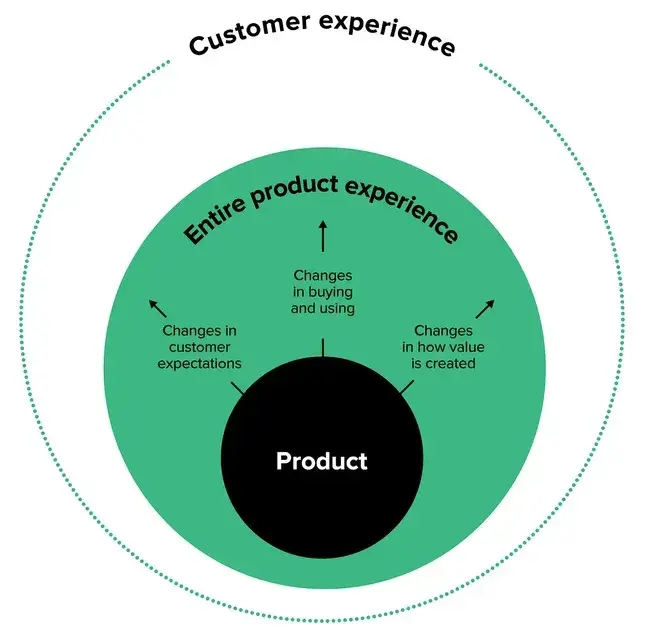
Pro tip: Check out HubSpot’s collection of customer experience tools.
Why Is Customer Experience Strategy Important?
I’ve seen organizations make the mistake of believing that customer experience strategy is only relevant for customer-centric roles. This couldn't be further from the truth.
Customer experience impacts a company’s brand, operations, and financials. Here are three key benefits a customer experience strategy brings to the table.
1. Higher Loyalty, Lower Churn
Research shows that 54% of consumers would stop using a brand after just one negative experience. The worse a customer feels about your brand, the more likely they are to jump ship. McKinsey recounts the tale of one of its clients in the telecommunications industry: When it overhauled its customer experience, it cut churn rates by 75%.
.webp)
Free Customer Journey Template
Outline your company's customer journey and experience with these 7 free templates.
- Buyer's Journey Template
- Future State Template
- Day-in-the-Life Template
- And more!
Download Free
All fields are required.
.webp)
2. Higher Revenue
This math isn’t hard, even for me. Longer-lasting customers and less churn equals more revenue. If you operate in an industry with a high customer lifetime value (CLV), one mistake could cost you hundreds or even thousands of dollars.
Instead, companies with high customer experience double their revenue growth, according to McKinsey. This isn’t an overnight solution — it can take five or more years of consistent excellence to have a dramatic effect. But the evidence is clear. Consumers are willing to pay more for products or services with a good experience and are also 15-25% more receptive to cross-selling.
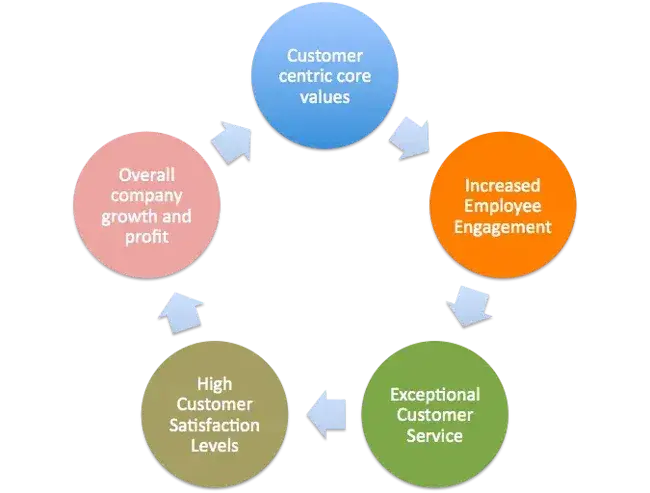
3. Brand Advocacy
Finally, customers who have a good experience are more likely to share on social media or word of mouth about your brand. CX professionals often measure this through the Net Promoter Score (NPS), which asks customers how likely they are to recommend a product or service. Those who had a good experience become promoters and contribute to a positive brand reputation and growth.
You can design your customer experience strategy practically by making a matrix of the state of your current customer journey. Use the template below to get started, and follow along with the rest of this post to complete it.
Featured Resource: Customer Experience Mapping Template
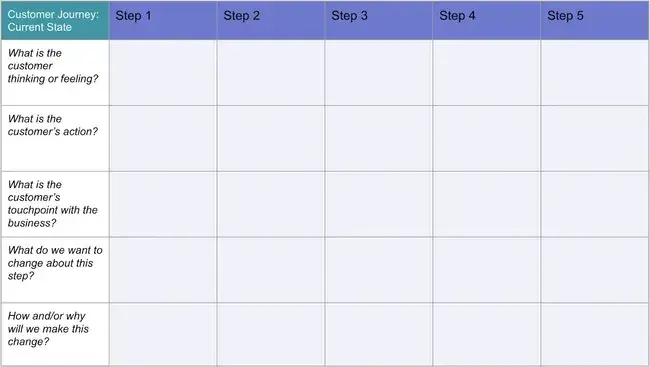
Elements of a Customer Experience Strategy
Before I delve into my top tips on how to create a customer experience strategy, I want to share key elements that contribute to a well-rounded CX strategy.
1. Review your current customer service metrics.
Start by reviewing your company‘s customer support baseline. The goal is to determine what’s working well for your business and where you can improve.
If you‘re unsure where to start, try checking your company’s help desk ticket data or call center data for key success metrics such as NPS, customer satisfaction score, and churn rate. If you're scoring below expectations, dig deeper into the problem and figure out where exactly things are turning sour for your customers.
What I like: Looking at the data gives you firm, objective ground from which to start building (or re-building) your CX strategy.
2. Create a customer journey map.
Another crucial element of your customer experience strategy is a customer journey map. A customer journey map outlines all of the interactions between a customer and your business, including any pain points they encounter along the way. In my experience, this resource not only helps you identify friction within your customer experience, but helps you see how to improve it. It’s also useful to gain internal buy-in.
“A customer journey map is a tool in your toolkit as a CX leader to gain that customer understanding,” explains Jeannie Walters, CEO of Experience Investigator.
“But within your organization, it‘s also a way to invite various leaders to participate, to get them to really understand what’s happening. Journey mapping is a verb, not a noun. This is an action you take to get the insights to move forward."
Pro tip: Check out examples and templates of customer journey maps for inspiration.
3. Train your customer service staff.
Once you know where you need to improve, the next step is sharing that information with your team and training your staff on new protocols. I know it‘s never fun letting your team know they’re falling short of expectations, especially when other groups in your department are hitting their numbers.
However, transparency reduces pushback against new policies and will encourage reps to improve their performance in the future.
Best for: Employee training has many benefits, including high engagement, great customer service, and more. You can even incentivize employee training.
4. Determine your customers' expectations.
Some customer expectations are predictable. For instance, your customers will always expect your team to be reliable and have a positive attitude. In addition to this, however, most customers will have multiple needs. In order to meet these needs, it's essential that your team is flexible.
In some cases, it may be imperative to provide a speedy response. At other times, quality and clarity of support means more. It all depends on how the customer feels when they reach out to your business and how well your team can identify and adapt to their needs.
5. Solve for the customer.
An effective customer experience strategy focuses on solving problems for the customer, whether those problems are anticipated or unexpected.
Customer success teams play a critical role in creating a frictionless customer experience. Not only do they plan for problems down the road but they also check in with customers routinely to ensure everything is going well post-purchase. In my experience, this proactive customer service reduces churn and strengthens your team's relationship with your customer base.
6. Provide self-service solutions.
Rather than requiring people to call your business whenever they need help, customers should be free to answer questions and solve problems independently with a self-serve support setup.
Self-service tools like knowledge bases and chatbots make it easier for customers to find solutions and reduce case volume for your reps. That saves your team some time to focus on the more complex issues requiring more troubleshooting expertise.
Best for: Fielding customer questions at all times, especially addressing simple, frequently asked questions so your team can focus on more complex customer requests.
7. Routinely collect feedback.
If you want to truly understand what your customers want from your business, you have to ask and — more importantly — listen to them. Your customers are more likely to leave you a review if you ask at the right time, but you must take this feedback into genuine consideration and apply it to your strategy.
I also recommend you routinely collect feedback from your customers. Their needs change constantly, making it important to keep up-to-date information. Use an automated tool like HubSpot’s Customer Feedback software to collect feedback at critical touchpoints in your customer experience.
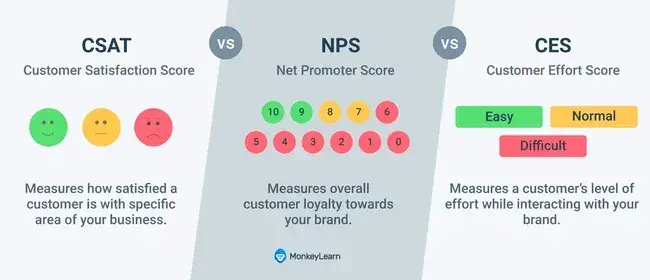
8. Track your team's performance.
If you get complacent with your customer experience strategy, competitors in your industry will catch up and lure away your customers when you aren't paying attention. The strategy that works this year may not work in future years as trends and consumer preferences change. Build in feedback to your post-purchase flows and incentivize customers to give feedback so you can track your performance over time.
How to Create a Customer Experience Strategy
Ready to build your customer experience strategy from the ground up? I'll help you break down the five essential steps to create a frictionless customer experience.
Customer experience design is the process of designing a frictionless experience for the customer anytime they interact with a point of contact at an organization. It centers around improving processes that meet customers' expectations and are easy and intuitive for them to follow and solve their problems.
1. Create empathy maps for each customer persona.
Every product design process starts with the question, “Who are we designing for?” Turns out, it's a great starting point for your CX strategy as well.
To chalk out an airtight CX plan, I recommend starting with an empathy map to understand your users. Each persona will have different needs and use cases. An in-depth assessment of these personas will reveal their desires, fears, and expectations.
“Empathy maps are a visualization that capture and communicate our understanding of a set of users," shared Kate Kaplan, Insights Architect for Nielsen Norman Group. “There's a traditional structure to empathy maps: four quadrants that capture what the user says, thinks, feels, and does."
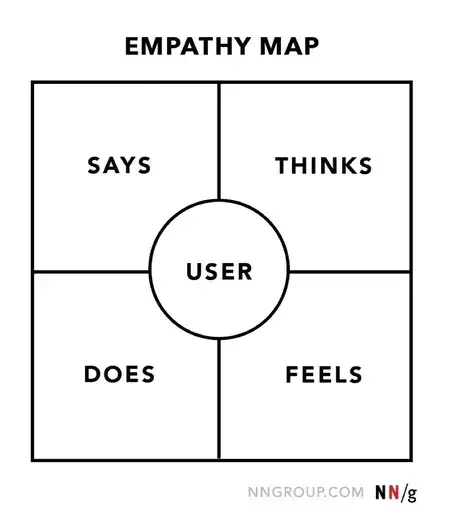
Through qualitative or quantitative means, capture your customers’ thoughts and emotions around your brand and product/service.
Conduct user interviews, listening sessions, and surveys to get a pulse of different personas. Translate your research inputs into the empathy map canvas.
Best for: The insights derived from empathy mapping can help in identifying and prioritizing user needs. I suggest creating cross-functional workflows for the design, product, and customer success teams to collaborate on using these insights to improve the CX.
2. Review your customer journey map and identify user needs.
Once you've mapped the ideal customer journey, analyze it properly to identify opportunities for enhancing your CX strategy.
Look for points of friction or areas where customer expectations aren‘t fulfilled. I also recommend checking if there’s scope for reducing unnecessary touchpoints to simplify your customer experience. Evaluating the time spent in different stages of the journey is crucial for streamlining the CX plan.
Most importantly, in my opinion, you need to find the crucial moments of truth in the customer journey — when users form a perception of your brand. These are the make-or-break moments in your CX. Optimize them to eliminate potential issues.
Lastly, assess all the transitions within your product when users change settings or switch devices. You’ll want to close the gap to make these transitions seamless.
3. Collect early feedback to make your CX airtight.
Creating and fine-tuning your customer experience strategy is an ongoing process. But one way I’ve found to set solid foundations for your CX strategy is by implementing user feedback early in the process.
Embrace an iterative approach to building your customer experience and involve beta users to test your progress. Encourage and incentivize transparent feedback to make sure you're moving forward in the right direction of creating a delightful CX.
Here are a few ways to collect feedback early on:
- Set up automated email behavior-based triggers for beta users to share feedback after every crucial touchpoint.
- Create focus groups to get qualitative, in-depth feedback on the most critical elements of your CX flow.
- Use heatmapping tools to monitor in-app user behavior and find blockers, aha moments, and other insights.
- Add micro surveys within the product to collect quantitative or subjective feedback about different aspects.
The bottom line is that it's always better to modify your customer experience design as long as it takes your team to create the perfect one instead of deploying a problematic CX flow that frustrates users.
4. Design workflows to quickly iterate the experience.
Given that your CX flow will change constantly, it's important to set up systems to implement these changes quickly.
I recommend creating smooth workflows to maximize collaboration between all involved stakeholders and speed up the process. Leverage automation and AI tools to streamline the change management part of your customer experience strategy. This will also empower your team to spread enhancements at scale.
I think another critical step here is creating a culture of CX excellence. Train your employees to stay on top of customer expectations, present ideas for improvement, and drive innovation in product development. Enable your employees to support your customers.
Pro tip: Check out these AI tools for customer service to see if any can fit into your tech stack.
5. Track the effectiveness of your CX efforts.
Building a CX strategy isn't a one-and-done process. You have to constantly measure the ROI of your customer experience and shift gears when necessary.
As you gather insights, I find it best to connect them back to your overarching strategy.
“A lot of customer experience programs actually started with a measurement program or a feedback program, but they weren’t connected to that bigger strategy,” shares Walters. “This isn’t just setting up a customer feedback program or a day in the life of the customer. All of that is great, but it has to be tied back to the strategy."
Customer success managers can collaborate with marketing and product teams to analyze user behavior, both within and outside the product. Not sure how you can find relevant insights about your customers? HubSpot's Customer Journey Analytics platform is just the solution you need.
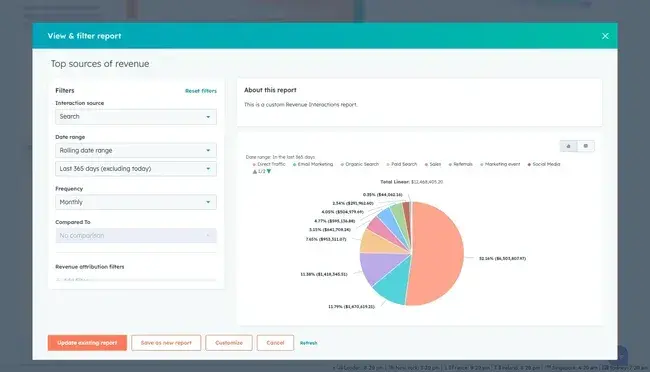
With this tool, you‘ll get granular visibility into the entire customer journey with real-time data on which campaigns or touchpoints are driving revenue. This data can also help you make smarter decisions — whether it’s for timing different aspects of your CX or for identifying the most crucial touchpoints.
To help you define a comprehensive, cohesive customer experience strategy, I'll help you explore some of the best practices to keep in mind for your business.
Customer Experience Strategy Best Practices
- Reach your target audience.
- Offer convenient customer service.
- Be consistent in your customer service activities.
- Refine products and services based on customer feedback.
- Provide convenience when purchasing products.
- Create in-person & digital personalization.
- Focus on simplicity & ease of use.
- Review the flexibility of your communication channels.
- Use automation and AI.
- Be proactive.
- Engage in social listening.
- Invest in team training and culture.
1. Reach your target audience.
Business communication plays a major role in shaping your customers‘ experience. If you’re not meeting customers where they are, you‘re missing out on an opportunity to engage them when they’re most interested or in need of help.
In my experience, to succeed in this area of customer experience means your business must first determine which channels your customers are most active on so you can adapt your approach and serve them there.
From there, it's crucial to familiarize yourself with the channel — social, email, live chat, or something similar. Ask yourself: How are my customers communicating on this channel already? And how can I use this information to make my outreach feel more organic?
Reachability, in my opinion, can serve as a helpful competitive advantage if you execute it properly. It‘s important that your business has a handle on your customers’ preferred channels and is providing reliable, consistent service through them.
.webp)
Free Customer Journey Template
Outline your company's customer journey and experience with these 7 free templates.
- Buyer's Journey Template
- Future State Template
- Day-in-the-Life Template
- And more!
Download Free
All fields are required.
.webp)
2. Offer convenient customer service.
As customers become more empowered to discover solutions and information on their own via the internet and social media, the demand for increased service convenience grows. For businesses to remain in good standing with customers, they must prioritize start-to-finish online support.
Think about it: If a customer has a question on the weekend, why should they have to wait until Monday to reach out? Do you have a 24/7 live chat feature enabled to meet their Saturday needs? If you don‘t, you’re making a mistake.
I think something as simple as having a polished, up-to-date knowledge base makes all the difference in allowing customers to help themselves without needing to reach out to your team.
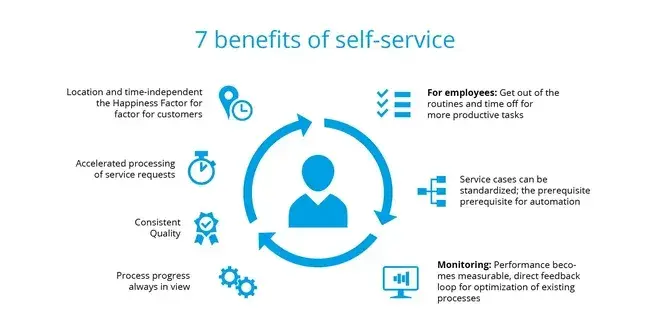
3. Be consistent in your customer service activities.
Customers are interested in building trust with the companies they do business with. Building trust requires consistency in your processes, policies, and actions from every team that influences the customer experience.
To help cultivate this culture of trust with your customers, I recommend you double-check that policies are up-to-date, reasonable, and carried out consistently across every scenario and buyer persona. (If you need help developing your buyer persona, you can use HubSpot's free tool to do so.) You don't want to have a situation where something like a return or exchange causes friction with your customers, making it difficult for them to make a purchase in the future.
4. Refine products and services based on customer feedback.
No matter how much work goes into perfecting the back end of your customer experience, it's important to remember that customers ultimately bought a product or service from your company. As a result, they expect it to be valuable and high-quality.
Refine your products and services based on customer feedback provided by an NPS survey, focus groups, or one-on-one customer calls. Solving the root of the issue with a product or service you sell can create a better customer experience overall. It doesn‘t matter how outstanding your customer experience strategy is if your product isn’t functional.
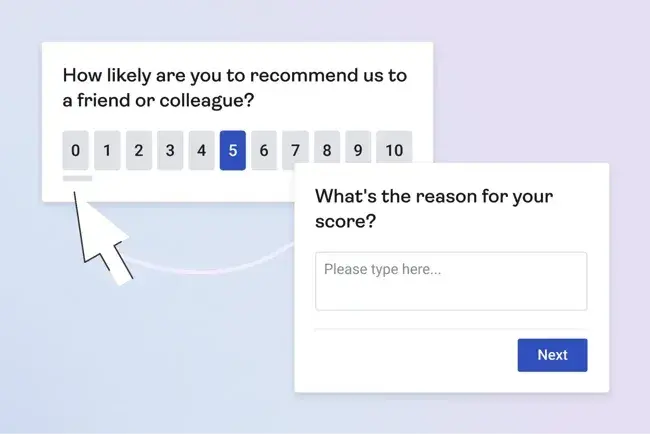
5. Provide convenience when purchasing products.
I think Nordstrom, a luxury department store known for its impeccable service, is a great example of offering customer experience tools aimed at improving purchasing convenience. Nordstrom allows their shoppers to order clothing with either curbside or in-store pickup.
It also notifies customers via optional texts, email, or store app notifications when their order is ready for pickup. Shoppers don't have to wait and guess when their order is prepared. Instead, they provide a quick-and-easy — and ultimately, painless — customer experience.

This system solves convenience by allowing customers to try on clothes when and where it's convenient for them. I like that it also gets people in the store, exposing them to thousands of other products they might be interested in purchasing.
But this is just one example of how your brand can leverage and invest in purchasing convenience as part of a customer experience strategy. Something as simple as having accurate pricing and packaging information on your website can effectively eliminate purchasing friction.
At the end of the day, you don't want to make it difficult for people to give you their money.
6. Create in-person & digital personalization.
Another thing that Nordstrom is using its new customer experience tool for? Data.
By learning about location and style preferences through the Nordstrom Reserve Online & Try On In-Store program, the retailer can incorporate personalization in a scalable way. And customers love personalization.
To provide the best possible customer experience, businesses should collect information throughout the customer relationship that can be used to provide relevant suggestions or more informed support in the future.
In the eyes of the customer, personalization (when done right) can serve as a sign of respect for their loyalty and business. It also signals that your business is interested in strengthening the relationship by continuously working to provide better service, suggestions, support, etc.
While there are many avenues for collecting and leveraging customer data, I think a simple solution such as a shared inbox for your customer success or service department is a great first step. By creating a transparent, universal space where folks can turn up past customer conversations or requests, you're laying the foundation for more contextual communication and outreach.
7. Focus on simplicity & ease of use.
Ever landed on a website that was a disaster to navigate on mobile? I have, and if you‘re anything like me, you didn’t stick around for very long.
Back in 2015, mobile internet use passed desktop use for the very first time. Since then, mobile usage continues to grow, making mobile optimization a high priority for businesses looking to provide a simple and seamless experience for customers and potential buyers.
In an effort to amp up your business‘s ease of use, I recommend focusing on simplifying website navigation for all browser types. After all, you can’t expect customers to wait until they get to a desktop to uncover the information they need, right?
A great example I’d like to reference here is Amazon. In my opinion, Amazon embodies simplicity and ease of use in its checkout process by enabling Amazon Prime members to buy an item with just one click:

Even more importantly, it also offers a quick and easy way to uncover product info and answers to common purchasing questions within the same screen:
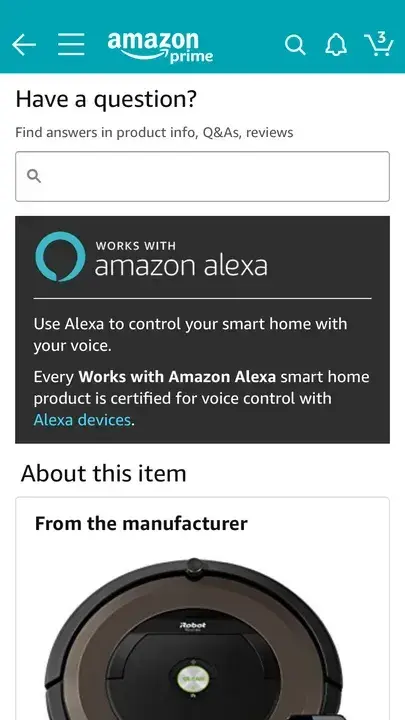
Pro tip: If you need examples of outstanding mobile websites, I've got you covered. And if you need help figuring out how to optimize your website for mobile users, I've got you covered there, too.
8. Review the flexibility of your communication channels.
When thinking about your approach to channel flexibility, I think “omni-channel” is the term to keep in mind.
If you're unfamiliar with the term, omni-channel is defined as an approach that provides customers with an integrated, seamless experience — even when moving from desktop to mobile or a social media channel to live support.
In an omni-channel world, the customer experience should be the same across platforms and channels — and it should contain proper context when applicable.
If you‘re looking to streamline channel flexibility as a key part of your customer experience strategy, get your team together to talk about what you want the customer experience to look, feel, and sound like across all channels. From there, you’ll have the common ground you need to begin employing a more fluid, contextual experience.
9. Use automation and AI.
No business wants its service to feel robotic. But the truth is, as your business grows its customer base, it will be more difficult to provide the same personalized service that you did when you were only managing a handful of customers. That‘s not to say keeping your standards up is impossible, just that you’ll just need a little help. Luckily, artificial intelligence (AI) can help.
When used correctly, I think AI features add tremendous value to the customer experience and create incredible convenience for your customer support team. Our State of Service Report found that 75% of service leaders already use AI, and 83% say it makes it easier to respond to service requests.
For instance, a chatbot can field customer inquiries on your website when your agents are away. Even if the bot just redirects customers to your knowledge base, it still points them toward a potential solution and allows your company to be accessible 24/7.
AI can also help customer service and support reps to be more effective. In the HubSpot Service Hub, for instance, the software can summarize your voice conversation with suggested action points and allow you to tag a teammate.
Pro tip: HubSpot offers an AI-powered tool called ChatSpot which is free AI-powered assistant to help supercharge your work.
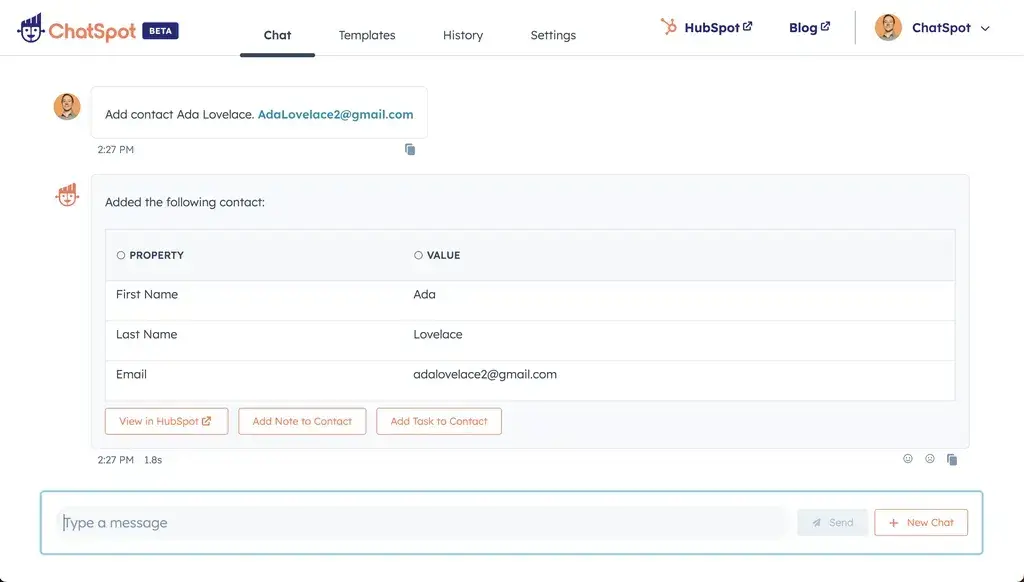
10. Be proactive.
Proactive customer service doesn‘t just have to be the responsibility of your customer success team. Instead, everyone at your business can play a role in the customer’s experience after they purchase a product.
For customer service teams, reps can alert the customer success manager (CSM) if someone has reached out multiple times with complaints. Rather than expecting the CSM to spot this individual on their own, frontline reps can easily look at the customer‘s ticket history and recognize whether or not they’ve had continued issues with your brand.
11. Engage in social listening.
What better way to learn about the customer experience than from their own social media?
Social listening is the monitoring of your brand's social platform presence for direct mentions of your business. It can be used to observe trending topics in your industry, your competitors’ behavior, and hear if your customers’ needs are being fulfilled.
Using websites like Facebook, X, LinkedIn, and more, you‘ll see what customers have to say about your company. I’ve found that if you’re attentive enough, you can discover the pain points in the customer journey and other insights that can positively impact the customer experience. You can also choose from several tools to track direct brand mentions for your business.
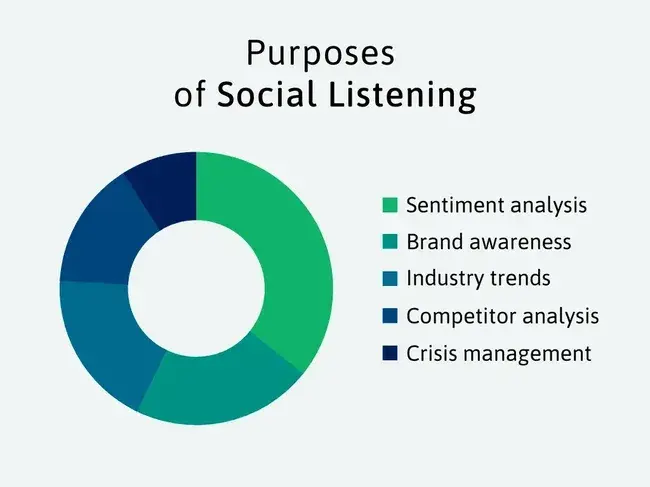
12. Invest in team training and culture.
Employee training shouldn't be a one-and-done part of their onboarding. Instead, I think it should happen routinely to make sure your staff is equipped to exceed expectations.
First, start with your culture by giving your employees the same stellar experience as you do your customers.
"We want to embed customer experience throughout the employee journey, blending our CX mission and messaging into the entire journey. If we can connect a great customer experience with an empowered and engaging employee experience, then everybody wins,” says Walters.
“Connecting a great customer experience with an empowered and engaging employee experience creates a virtuous cycle where everybody's happy."
I know it's important to offer knowledge training about your product, but what about preparing them for the face-to-face customer experience? Routine team training can look like conducting role-play scenarios or simulations to see how each employee treats potential customers in different situations. Some role-play scenarios include:
- Observing how they greet a customer.
- Solving a unique problem for a customer.
- Informing or guiding the customer through different options.
What I like: Role-play training workshops give employees a chance to critique each other on what they've done well and where they can improve in their communication, attitude, and presentation of your product/service.
How to Measure Your Customer Experience Strategy
Building an excellent CX flow isn't a game of guesswork or intuition. You have to strategically measure the impact of your customer experience strategy and make enhancements based on data-backed evidence.
That's why you have to track how users are interacting with your product and analyze the effectiveness of your customer experience. Here are a few essential metrics to achieve this:
- Customer satisfaction score. Track this as it helps gauge users' satisfaction with your product and the quality of support.
- Customer effort score. To assess how difficult or easy it is for new users to navigate your product.
- Customer lifetime value. To calculate the value you can gain from a customer on average.
- Retention rate. To measure how many customers will continue using your product.
- Support tickets. To assess the issues users commonly struggle with.
Tracking these core CX metrics gives you a pulse of your customers and flags any gaps you need to address in your experience.
Quick Tips for Optimizing Your Customer Experience Strategy
You‘ve done the legwork to create a great customer experience. But as user needs evolve, you’ll have to invest more effort in optimizing this CX flow. Constantly evolving your strategy ensures your CX is aligned with expectations.
To optimize your CX, I recommend you establish feedback loops to regularly collect input from users. Whether it's minor bugs or major inefficiencies in your product, give users a space to share their candid feedback whenever they want.
On top of this, you can also connect with power users to understand how your product is helping them achieve their goals. Use this conversation to identify pain points within the platform and map the scope for improvement.
Finally, remember to pay close attention to user sessions to find real-time insights on where users get stuck or feel confused.
These few tactics will give you much to work with to optimize your customer experience. Work with the design, engineering, and customer service team to eliminate all roadblocks and create a frictionless flow.
Customer Experience Strategy Is a Long-term Play
Rome wasn‘t built in a day — and you shouldn’t expect your customer experience strategy to be either.
My advice? Work on defining and streamlining your customer experience design, but do so under the notion that things will need to evolve as your business and customer base grows.
I’ve discovered that as I learn what it means to communicate with customers on their terms and collect data along the way, I find it's easier to make informed decisions about my overall customer experience strategy. I hope you discover this, too!
Editor's note: This post was originally published in August 2020 and has been updated for comprehensiveness.
.webp)
Free Customer Journey Template
Outline your company's customer journey and experience with these 7 free templates.
- Buyer's Journey Template
- Future State Template
- Day-in-the-Life Template
- And more!
Download Free
All fields are required.
.webp)

![Everything I Know About Product Experience [+ 4 Key Product Elements]](https://www.hubspot.com/hubfs/product-experience-1-20250107-4891043.webp)


![11 Customer Service & Support Metrics You Must Track [New Data]](https://knowledge.hubspot.com/hubfs/ft-metrics.webp)



![14 Best Practices for B2B Customer Experience [New Data]](https://www.hubspot.com/hubfs/b2b-customer-experience_2.webp)
